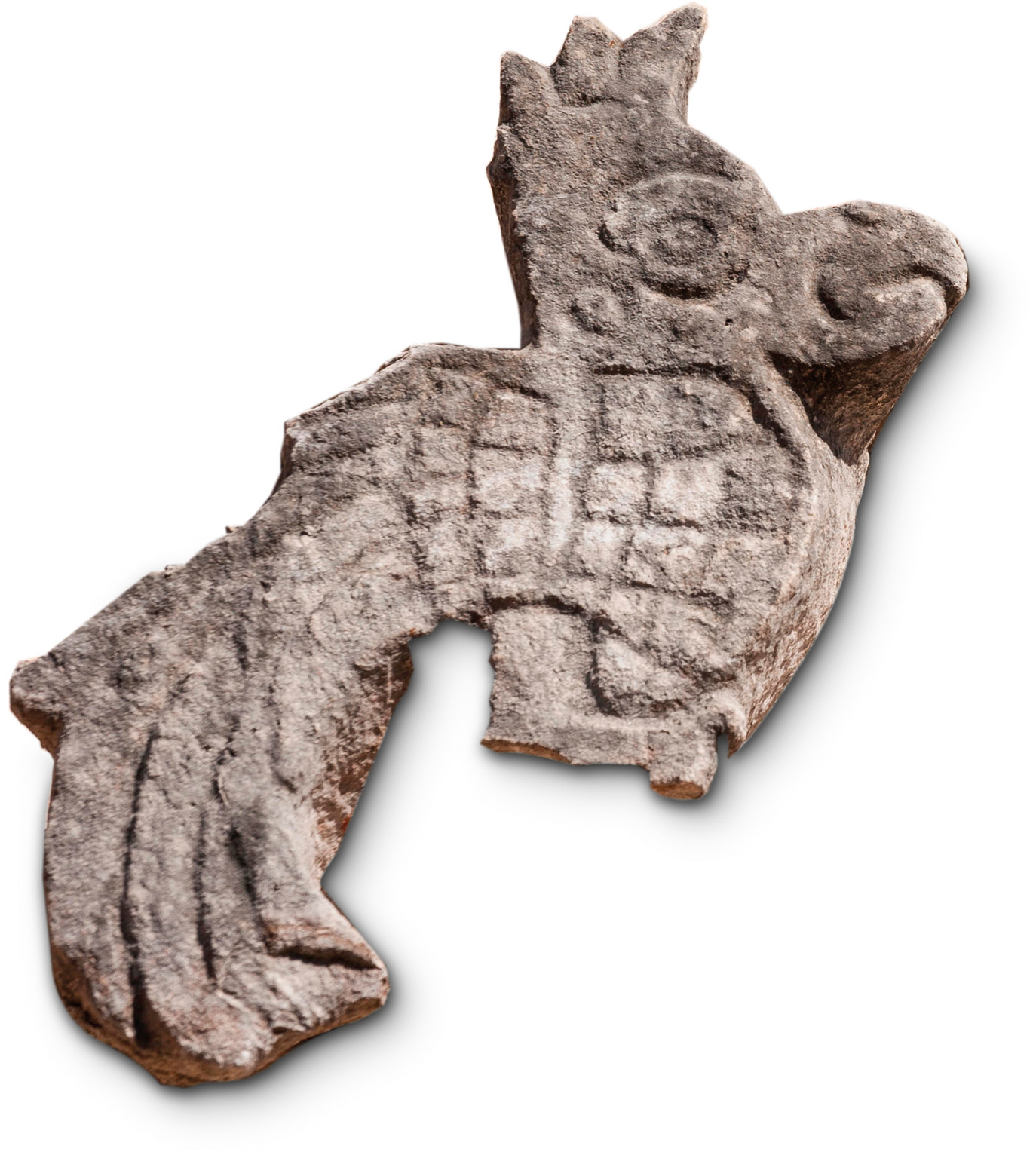UXMAL: THE CARVINGS

Map of Uxmal’s Carvings
1. Monstermouths
Temple entrances in the form of giant monster-like faces, such as on the House of the Dwarf at the Pyramid of the Magician, made a striking connection between the temple and the gods of the earth.
2. Nunnery: Vision Serpents
The patterns on the East Building are Vision Serpents, conduits between men and the “Otherworld.”
3. Nunnery: Serpent Heads
The huge feathered snakes winding around the West Building are probably Vision Serpents. Human faces emerge from their jaws.

Serpent heads at the Nunnery
4. Nunnery Quadrangle: Mayan Huts
A distinctive feature of Puuc carving is the combination of complex symbols with everyday images. The huts carved on the South Building of the Nunnery are very little different from those seen in Yucatecan villages today.
5. Parrots of the Great Pyramid
Stylized guaca-mayas (macaws) feature prominently as symbols of uncontrolled nature in the carvings on the temple at the top of the Great Pyramid.

Parrot carving at the Birds Quadrangle
6. Nunnery: Flowers and Lattices
Lattice work represented the huts in which meetings were held, while flowers symbolized magic. The combination of the two denoted a ceremonial site.
7. Muyal Symbols
The simple spiral pattern seen frequently on the Nunnery and Governor’s Palace represents the Mayan word for cloud, muyal, yet another symbol of contact with the heavens.
8. Lord Chak
The figure in a spectacular headdress set within the facade of the Governor’s Palace is believed to be Lord Chak himself.
9. La Picota
The phallic column called the “whipping-post” in Spanish has inscriptions on it that have never been deciphered. It formed part of a fertility cult that was a distinctive feature of Uxmal.
10. Birds Quadrangle
The beautiful images of parrots and other birds carved here symbolized the unpredictable elements in nature.
THE PUUC CITIES
Uxmal was the largest of a string of Mayan communities that flourished in the Puuc Hills of southern Yucatán around AD 650–920. The other well-known cities are Kabah, Sayil, Xlapak, and Labná. Their very distinctive style of architecture is the most refined of those used by Mayan builders, and is characterized by strong horizontal lines, elegant proportions, and a sharp contrast between very plain lower walls and rows of elaborately carved friezes above them. Many architectural details seem to mimic humbler buildings and natural features, such as the small drum columns along the bottom of many Puuc walls, which imitate the stick walls of village huts. The communities that lived in these cities were wealthy but fragile, because this region is one of the driest parts of the Yucatán. Indeed, severe drought was probably a major reason why the southern Mayan cities collapsed very quickly, in AD 800–950. A one- or two-day tour of the main Puuc cities is possible, following the recognized Puuc Route, south of Uxmal.

Kabah’s Codz Poop The main facade of the Codz Poop (Palace of Masks) at Kabah is covered in over 250 faces of the rain-god Chac. The Maya believed that covering structures with images of gods gave the buildings divine powers.
TOP 10 PUUC CITIES
1. Oxkintok
2. Uxmal
3. Kabah
4. Sayil
5. Nohpat
6. Xlapak
7. Labná
8. Chacmultún
9. Xcalumkín, Campeche
10. Itzimté, Campeche

Mayan Puuc-style carving can clearly be seen here on the grand Arch of Labná.
